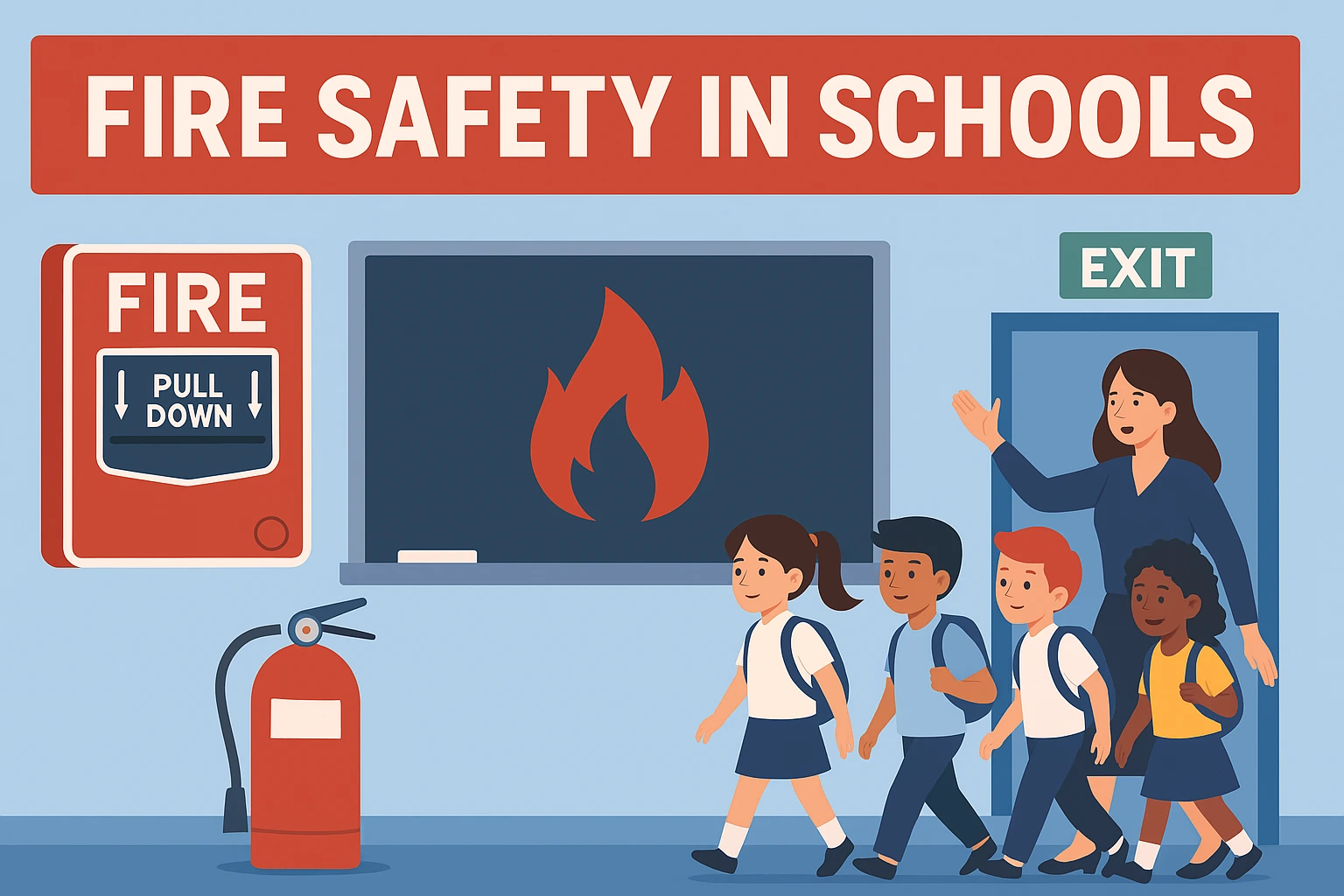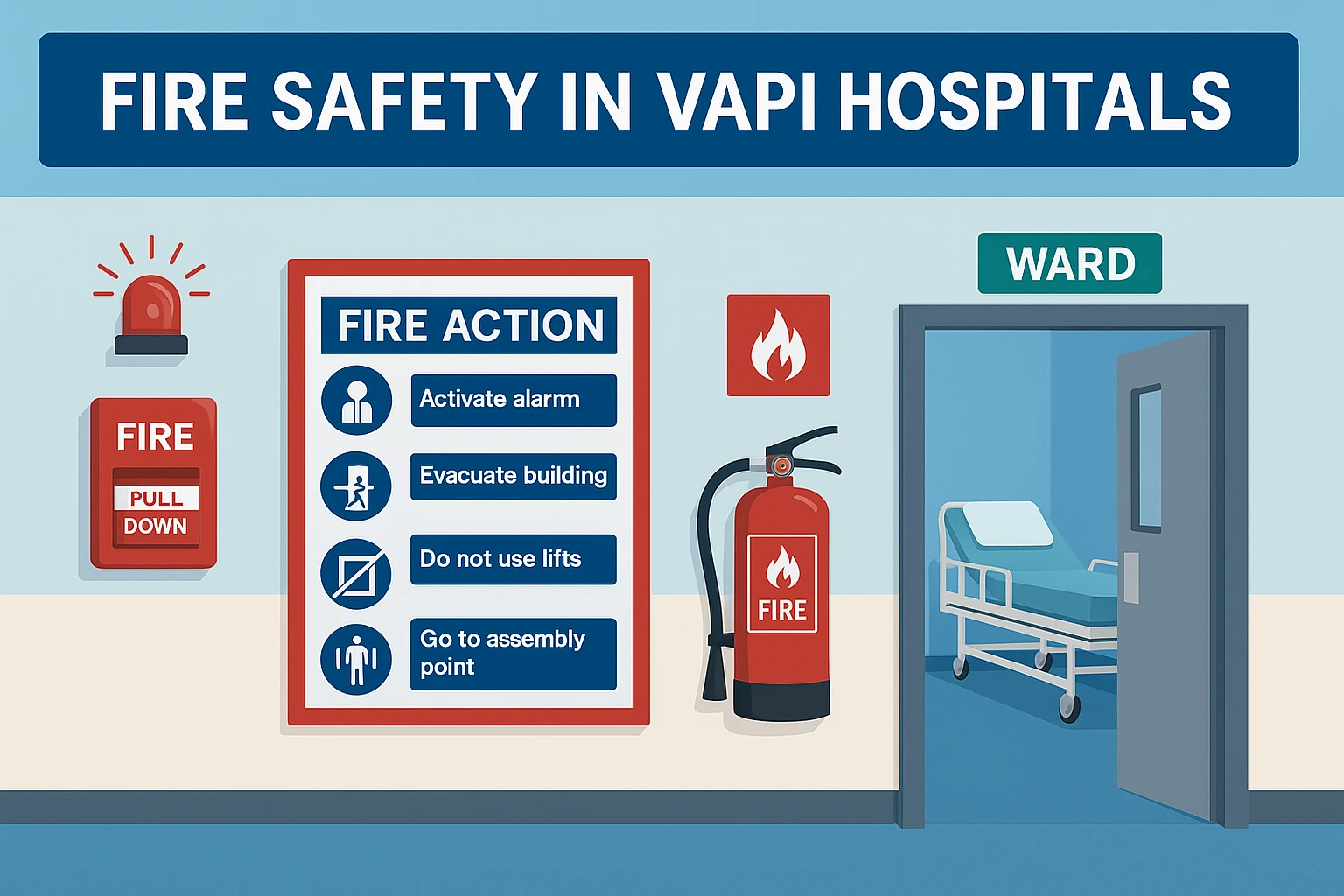Fire Safety Strategies for Banks in Vapi
June 03, 2025

Table of Contents
Essential fire‐safety guidelines for Vapi banks: early detection, suppression, evacuation plans, and maintenance to safeguard assets, staff, and customers.
Introduction
Banks in Vapi handle not only financial assets but also sensitive documents, ATMs, vaults, and a steady stream of customers. A single fire incident can cause catastrophic data loss, compromise vault security, and put lives at risk. This post outlines the critical fire‐safety measures—advanced detection, tailored suppression systems, clear evacuation routes, rigorous maintenance schedules, and staff training—that every bank in Vapi needs to ensure continuous operations, regulatory compliance, and the safety of employees and patrons.
1. Advanced Detection & Alarm Systems
Early‐Warning Smoke Sensors: Photoelectric detectors in teller halls, back‐offices, and vault corridors catch smoldering fires from electrical equipment or paper files.
Heat Detectors: Rate‐of‐rise sensors above server racks, ATM kiosks, and break rooms to avoid false alarms from cooking appliances.
Flame Detectors: UV/IR units in exterior ATM vestibules and near fuel‐powered generators.
Centralized Alarm Panels: Connect to the Vapi Fire Brigade and corporate security headquarters for immediate notification and coordinated response.
2. Customized Suppression & Extinguisher Solutions
Clean‐Agent Systems (FM-200/NOVEC 1230): Ideal for server rooms, data centers, and vault areas—extinguishes without water damage or residue.
CO₂ Extinguishers: Placed at electrical panels, ATM control units, and IT racks.
ABC Dry‐Powder Extinguishers: One 4 kg unit per 100 m² in customer lobbies, manager offices, and training rooms—multipurpose for paper, electrical, and liquid risks.
Water‐Mist Sprinklers: In general lobby and office areas to minimize collateral water damage to banking hardware.
3. Evacuation Planning & Infrastructure
Designated Exit Routes: Clearly marked corridors from teller counters to nearest stairwells; avoid lifts during fire events.
Emergency Lighting: Battery‐backed in Gujarati and English, with braille panels—guides customers and staff during power outages.
Refuge Zones: Safe areas on each floor for customers who cannot immediately evacuate (elderly, disabled) until first responders arrive.
Fire‐Rated Doors & Barriers: EI 90‐rated doors between main halls and back‐office server rooms to slow fire spread.
4. Inspection, Testing & Maintenance
Daily Visual Checks: Front‐desk staff verify extinguisher gauges, seals, and clear access; ensure hallways and exits are unobstructed.
Monthly Alarm & Sensor Tests: Security or facilities personnel trigger detector tests and confirm panel fault indicators are clear.
Quarterly Sprinkler Flow Tests: Engineering team checks flow rates and valve positions; log results for audits.
Annual Full Audit: Engage an ISI‐certified vendor (e.g., Munshi Fire Safety, Vapi) to inspect all active and passive systems, recalibrate sensors, and issue a compliance certificate.
How to Conduct a Bank Fire Drill in Vapi
1. Plan & Coordinate
Form a safety committee including branch manager, security officer, and facilities lead.
Choose a weekday morning (low customer volume); notify local fire brigade and corporate HQ.
2. Activate the Alarm
Use the central fire panel to trigger both sirens and voice evacuation messages in Gujarati and English.
Observe response times: security staff ensure immediate lockdown of vault and ATM cabinets (if possible).
3. Evacuate Staff & Customers
- Branch manager announces drill; tellers guide customers calmly toward marked exits.
- Security personnel assist elderly or disabled customers into refuge zones outside the building.
4. Shut Down Critical Systems
IT staff initiate orderly shutdown of non‐essential servers; vault doors remain locked but safe.
Engineering staff close dampers and verify sprinkler valve positions.
5. Account & Assist
Conduct headcount of all staff and any remaining visitors; security officer logs any missing persons.
First‐aid qualified staff attend to any minor injuries (e.g., slips or panic).
6. Debrief & Document
Gather the safety committee to review drill performance, noting response times and any confusion points.
Update emergency procedures and post revised evacuation maps in break rooms and teller areas.
commonly asked questions
Do banks in Vapi require clean‐agent systems by regulation?
While not explicitly mandated, clean agents (FM-200/NOVEC 1230) are strongly recommended for server rooms and vaults to prevent water damage and comply with best practices under Gujarat fire codes.
How often should bank staff receive fire‐safety training?
At a minimum, conduct semiannual in‐house training on P.A.S.S. extinguisher use, alarm recognition, and customer evacuation assistance. Quarterly tabletop drills are also advised.
What’s the best way to protect ATM vestibules overnight?
Install UV/IR flame detectors and link them to a central alarm panel. Combine with a bottled‐gas suppression cylinder in the ATM cabinet that discharges upon sensor activation.
Can passive fire protection (doors, sealants) be included in an AMC?
Yes. Our AMC packages integrate active systems (extinguishers, sprinklers, alarms) and passive measures (fire doors, intumescent coatings) for seamless inspections and compliance.
Admin
Fire Safety Expert
Stay Updated
Get the latest fire safety tips and news delivered to your inbox.


